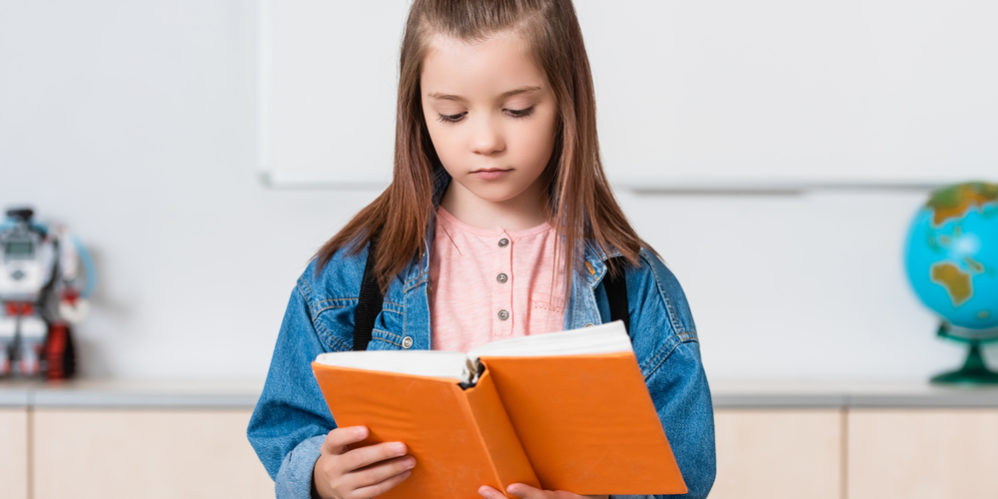Reading and writing are skills that every person needs to thrive in today’s world, yet teaching children these skills can be daunting. Montessori schools take a very different approach to reading and expressing oneself than traditional schools. In the Montessori classroom, children learn to speak and verbalize their emotions before learning to write. As their writing skills develop, they learn to read.
But how do Montessori schools teach reading specifically? Let’s explain.
Montessori Approaches to Literacy
There are some prerequisites for children to start learning how to read. This includes motivation. Montessori educators pay close attention to the developmental level of each individual student. The children progress when they are ready; once they display a certain level of skill, their tasks become more difficult. Therefore, if a child isn’t ready to learn how to read, their teacher continues with speaking or writing practice.
Should a teacher assess that a child is ready to read, they start focusing on things like:
Letter Knowledge
In the Montessori point of view, writing precedes reading. Children begin their reading education by writing out phonetics. That means they focus solely on sounds that form the foundation for reading more difficult words. Once a child can relate certain letters and sounds, they start expanding on their knowledge of the alphabet.
Narrative Skills and Vocabulary
Experience assists with a broader vocabulary. Montessori teachers will give students real world experience and knowledge, such as the appropriate names of trees, plants, and countries. They can do this by presenting children with flash cards and asking for the real name of the item or object in the picture. Doing so helps children perceive how language is connected to the real world and vice versa.
Storytelling and Books
Montessori instructors also use songs, books, stories, as well as scientific or mathematical curricula to educate students about the real world. As children gain fundamental reading skills, they will start understanding the world and discuss it. Reading stories to children helps them acquire word pronunciation skills and introduces them to new vocabulary.
For the parent, you can read to your child at night or entice them to use their imagination to come up with stories of their own. Storytelling is a wonderful way to spark creativity and a lifelong love of reading.
Montessori Reading Materials
Montessori classrooms are outfitted with all kinds of materials designed for learning reading, writing, and mathematics. Depending on a child’s developmental stage, the Montessori materials they use may be different from others. Each of the materials are constructed to engage multiple parts of the child’s mind and senses.
Here are some Montessori materials used to teach reading:
1. Sandpaper Letters
The first stage of teaching reading at Montessori school is with sandpaper cards. These cards are designed in the shape of letters so a child can visualize what those letters look like. Then, they can touch or trace the letter to gain knowledge of the shape. Touch supports phonetic learning, because children learn how to replicate the letter when they begin to write.
2. Object Cards
Once students master sandpaper letters and basic phonics, they are given cards with phonetic pairs. Students begin to put meaning to sound with this engaging and playful task.
3. Word Formation
The last segment of pairing objects and letters with sound is with word formation cards. This task has students identify individual letters by saying the sound on the card then matching it with the right object. Word formation helps students read, speak, and visualize words and their meanings.
4. Pink, Blue, and Green
As children gain more skills with reading and advance through the different age groups, the activities get more difficult. For example, once students have graduated beyond sandpaper letters and word formation, they are introduced to journaling and the Pink, Blue, and Green series of cards.
These three sets of cards build on certain skills. The Pink series, for example, has three-letter, or CVC, words.
5. Action Cards
The action cards are another way to get children to associate verbs with the movement they describe. Teachers present to the students a box filled with noun and verb cards. Since this is a game-like lesson, children often play together. One child will take a verb card and perform the action written there, while the rest of the group guesses the verb. Think of it as learning charades.
Looking For a Montessori School in Philadelphia?
How do Montessori schools teach reading? By using materials that teach basic phonetics, as well as cards and books. A good Montessori school will have materials that children can choose to use to learn on their own, so they can master sounds and language on their own time. Every activity builds upon the rest, providing students with a continuously expanding vocabulary and education.
Interested in seeing how a Montessori classroom functions? Request a virtual tour at Fishtown Montessori by filling out the contact form or giving us a call.






